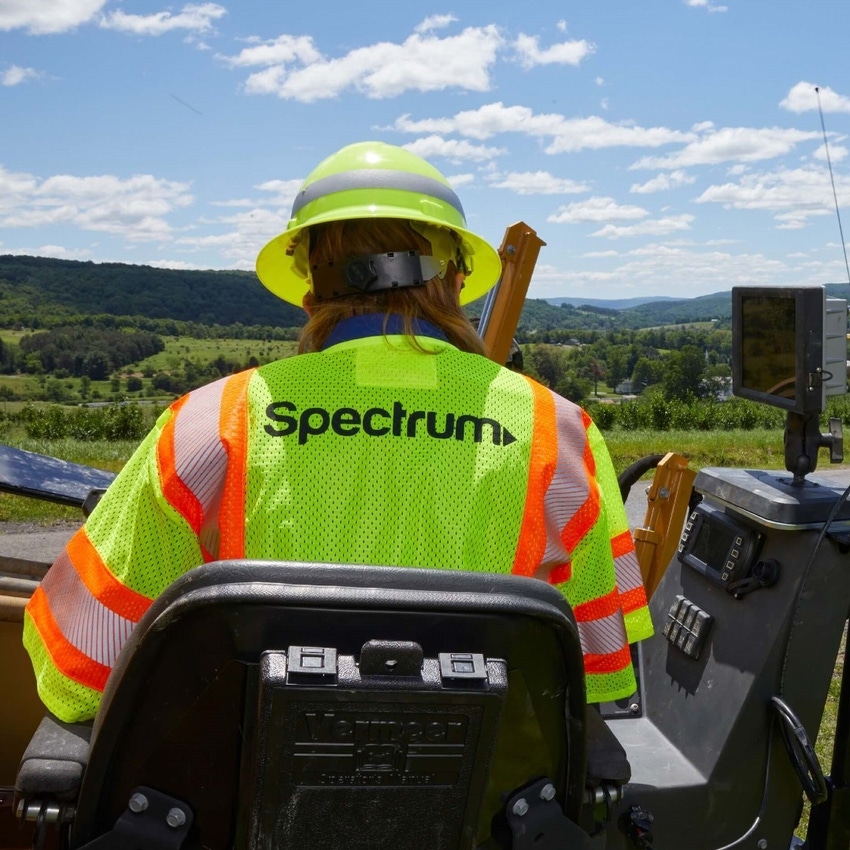Charter sheds more light on its subsidized, rural network buildout
'We're the largest rural provider today,' Charter CEO Chris Winfrey declares as Charter activates 44,000 subsidized rural locations in Q1. Charter is still targeting 300,000 new subsidized passings for 2023.

Charter Communications' broadband subscriber growth strategy is partly focused on footprint expansion. That involves a blend of organic edge-outs in adjacent areas alongside buildouts that benefit from government subsidy programs such as the Rural Digital Opportunity Fund (RDOF).
Charter provided a lot more financial and operational detail about its subsidized fiber network buildout activity in rural areas with its Q1 2023 results. Those show that it's generating monthly revenue per customer of about $104.72 – a figure that also includes video and mobile services that are being bundled with broadband.
Figure 1:  (Source: Charter Communications)
(Source: Charter Communications)
Charter activated about 44,000 subsidized rural passings in Q1, a period that tends to see construction activity slow due to wintery weather. However, Charter did see network construction activity in that category accelerate toward the ends of the quarter as 20,000 passings were built in March alone. Charter said it remains on target to build fiber to 300,000 subsidized rural locations for full 2023.
"Costs are coming in as planned and we have labor, the equipment and the supply necessary to execute our build," Charter President and CEO Chris Winfrey said Friday on the company's Q1 2023 earnings call. "We're the largest rural provider today," he declared.
Charter's trending schedule (PDF) for the quarter provided some granular detail on its subsidized rural buildouts. It showed, for example, that Charter ended the period with 169,000 passings from its subsidized buildout and 50,000 residential customers within that part of the footprint:
Figure 2:  Click here for a larger version of this image.
Click here for a larger version of this image.
(Source: Charter's Q2 2023 trending schedule)
Charter's return in the subsidized build footprint, which lacks meaningful broadband competition, is looking attractive. Winfrey said Charter is seeing penetration rates of about 40% just six months after service becomes available.
Those figures are taking shape as Charter moves ahead with its sizable RDOF buildout commitment. Winfrey said Charter could complete its RDOF commitments two years ahead of the deadline if it's able to get the necessary support for permits.
Bullish about BEAD
Winfrey said it's too early to say how Charter will fare in the $42.45 billion Broadband Equity, Access, and Deployment (BEAD) program. But he believes that the company's experience and track record with rural buildouts put it in good position to win bids. The NTIA is expected to announce state-level funding allocations on June 30.
"But I'm bullish. I think we're going to do well," Winfrey said.
New Street Research analyst Jonathan Chaplin believes that returns for BEAD could be even better than RDOF. His rough estimate is that Charter could win 2.6 million of the 14 million BEAD-eligible locations identified so far.
"We assume 70% penetration in these markets, which would mean 1.8M subscribers. BEAD could bring systems that would bring more subs than buying an MSO like Mediacom, but at a low acquisition price of ~$3,000 /location, and in markets with no competition (ever)," Chaplin explained in a research note issued today after Charter's earnings call.
HFC upgrade update
Charter also provided updates on its network evolution plan. That plan, focused on Charter's hybrid fiber/coax (HFC) plant, is expected to cost just $100 per home passed.
Tied into the first phase of that plan covering 15% of its HFC footprint, Winfrey said Charter has completed the physical work for "high-split" upgrades in two mid-sized markets that will enable the operator to offer speeds of 2 Gbit/s down and 1 Gbit/s upstream. That part of the upgrade is based on an HFC network built to 1.2GHz and a traditional cable modem termination system (CMTS) architecture. Via the high-split, Charter is dedicating 5MHz-204MHz of spectrum to the upstream, up from a legacy range of 5MHz-42MHz. Similar high-split upgrades are underway in an additional six markets, Winfrey said.
Charter is also preparing for a second phase covering 50% of the footprint that will upgrade the HFC network for a distributed access architecture (DAA) and a virtual CMTS. That part of the network will be built to 1.2GHz and initially support speeds of 5 Gbit/s down by 1 Gbit/s up.
Charter's third phase of the plan will cover 35% of the network and start in late 2024. That segment will go with a full deployment of DOCSIS 4.0 and push the HFC plant spectrum to 1.8GHz. That combo will put Charter on a path to 10 Gbit/s.
Winfrey said Charter expects its HFC network evolution to be "essentially complete" by the end of 2025.
For the quarter, Charter added 76,000 broadband subs (67,000 residential and 9,000 business), so most of its additions are coming from core, existing markets outside of its subsidized buildouts. Charter ended the quarter with 30.5 million broadband subs.
Charter's Q1 2023 broadband sub gain was well below the 185,000 it added in the year-ago quarter. Execs said sluggish housing move activity and near record low churn continues to slow broadband subscriber growth.
The company is seeing a "small impact" from fixed wireless access competition in the "price-sensitive customer segment," Charter CFO Jessica Fischer said. She reiterated Charter's stance that it expects those FWA subs to return to Charter over time.
Winfrey said Charter expects to add more broadband subs in 2023 over 2022's +344,000.
Video losses worsen
Video is a sore spot that's getting worse. Charter lost 241,000 pay-TV customers in the quarter, more than the -164,000 expected by analysts. Charter's rate of video loss has dipped to -5.2%.
Winfrey said some of that is coming from downgrades that followed the passing through of higher programming costs.
But he's also hopeful that new products from the Charter-Comcast Xumo streaming joint venture will help out its video story. Charter plans to make Xumo products available across its markets toward the end of 2023.
"I think it's going to be very attractive to customers and I think it has the opportunity to improve our trajectory on video as well in a profitable way," he said of Xumo.
Related posts:
— Jeff Baumgartner, Senior Editor, Light Reading
About the Author(s)
You May Also Like












